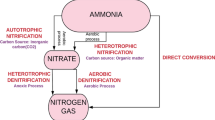Abstract
Two-phase partitioning bioreactors (TPPBs) are based on the addition of an organic phase, often called vector, to a bioreactor in order to increase mass transfer of oxygen or gaseous substrates from the gaseous phase to the aqueous phase. In TPPBs, like in any other reactor design, the characterization of the bioprocess is often required for design, control, and operation purposes. Pulse respirometry is a method that allows for microbial processes characterization through the determination of several stoichiometric and kinetic parameters with relatively little experimental effort. Despite its interest and its previous application in countless applications, pulse respirometry has never been applied in TPPBs. In this work, pulse respirometry was assessed in a model TPPB degrading terephthalic acid and using Elvax™ as solid vector to enhance oxygen transfer. The results indicated that the addition of 10 to 20 % Elvax increased oxygen transfer by up to 97 %, compared to control with no vector. Pulse respirometry was successfully applied and allowed for the determination of the growth yield, the substrate affinity constant, and the maximum growth rate, within other. It is concluded that pulse respirometry is a useful method, not only for the characterization of processes in TPPBs but also for the selection of a vector within several brands commercially available.




Similar content being viewed by others
References
Quijano, G., Revah, S., Gutierrez-Rojas, M., Flores-Cotera, L., & Thalasso, F. (2009). Process Biochemistry, 44, 619–624.
Daugulis, A. J., Tomei, M. C., & Guieysse, B. (2011). Applications Microbiology Biotechnology, 90, 1589–1608.
Daugulis, A. (2001). Trends in Biotechnology, 19, 457–462.
Muñoz, R., Villaverde, S., Guieysse, B., & Revah, S. (2007). Biotechnology Advances, 25, 410–422.
Littlejohns, J. V., & Daugulis, A. J. (2007). Chemistry Engineering Journal, 129, 67–74.
Quijano, G., Hernandez, M., Villaverde, S., Thalasso, F., & Muñoz, R. (2010). Applications Microbiology Biotechnology, 85, 543–551.
Buchs, J. (2001). Biochemistry Engineering Journal, 7, 91–98.
Zilouei, H., Guieysse, B., & Mattiasson, B. (2008). Chemosphere, 72, 1788–1794.
Oliveira, C. S., Ordaz, A., Alba, J., Alves, M., Ferreira, E. C., & Thalasso, F. (2009). Chemosphere Products Process Modelling, 4(2), 1–14.
Ordaz, A., Oliveira, C. S., Quijano, G., Ferreira, E. C., Alves, M., & Thalasso, F. (2012). Journal of Biotechnology, 57, 173–179.
Ordaz, A., Oliveira, C.S., Aguilar, R., Carrión, M., Ferreira, E.C., Alves, M., Thalasso, F. (2008) 100, 94–102
Spanjers, H., Takacs, I., & Brouwer, H. (1999). Water Science and Technology, 39(4), 137–145.
Pophali, G. R., Khan, R., Dhodapkar, R. S., Nandy, T., & Devotta, S. (2007). Journal of Environmental Management, 85, 1024–1033.
Vamsee-Krishna, C., & Prashant, S. P. (2008). Indian Journal Microbiology, 48, 19–34.
APHA. (1999). Standard methods for the examination of water and wastewater (20th ed.). Washington, DC: American Publishers Health Association.
Badino, A. C., Facciotti, M. C. R., & Schmidel, W. (2000). Journal Chemistry Technology Biotechnology, 75, 469–474.
Gogate, P. R., Beenackers, A. A. C. M., & Pandit, A. B. (2000). Biochemistry Engineering Journal, 6, 109–144.
Oliveira, C. S., Ordaz, A., Alves, M., Ferreira, E. C., & Thalasso, F. (2011). Biochemistry Engineering Journal, 58–59, 12–19.
Choi, K. Y., Kim, D., Sul, W. J., Chae, J. C., Zylstra, G. J., Kim, Y. M., & Kim, E. (2005). FEMS Microbiology Letters, 252, 207–213.
Quijano, G., Rocha-Rios, J., Hernandez, M., Villaverde, S., Revah, S., Muñoz, R., & Thalasso, F. (2010). Journal Hazard Materials, 175, 1085–1089.
Acknowledgments
This work has been supported by “Instituto de Ciencia y Tecnologia del Distrito Federal” (2008-PICS-056). We gratefully acknowledge the financial support to Alberto Ordaz Cortés through the postdoc grant from “Consejo Nacional de Ciencia y Tecnología” (290586_IPN). The authors declare that they have no conflict of interest.
Author information
Authors and Affiliations
Corresponding author
Rights and permissions
About this article
Cite this article
Ordaz, A., Quijano, G., Thalasso, F. et al. Pulse Respirometry in Two-Phase Partitioning Bioreactors: Case Study of Terephthalic Acid Biodegradation. Appl Biochem Biotechnol 169, 810–820 (2013). https://doi.org/10.1007/s12010-012-0020-2
Received:
Accepted:
Published:
Issue Date:
DOI: https://doi.org/10.1007/s12010-012-0020-2




